Genre: Puzzle Developer: Sega Enterprises Publisher: Vic Tokai Players: 1-5 Released: 1993
Columns demands respect! Sega’s long-derided puzzle series is always brushed off as being simply an inferior copy of Tetris. Then, Sega doesn’t even bother to port its sequel, Columns II: The Voyage Through Time, to its hit 16-bit system after a run in the arcades. Finally, Columns never gets credit for ushering the concept of chains and combos into the puzzle genre. Yet, despite its addictive gameplay, attractive presentation, and great soundtrack, Columns will always be viewed as riding Tetris‘ coattails much as Fatal Fury was next to Street Fighter II, with no regard for their own strengths and excellence. It’s the Rodney Dangerfield of the video game world, sans drunken teenage college escapades.
Tired of the demeaning public opinion, Sega unleashes its fury by creating Columns III: Revenge of Columns. Unfortunately, Columns III ends up being a lesser game overall, as for every new element offered, it sacrifices existing traits which has made the original so enjoyable. Whereas the original well-based puzzle game is brushed off as a Tetris-clone, Columns III will no doubt be viewed as a Puyo Puyo-clone, and a poor one at that.
Columns III is a versus puzzle game in the style of Puyo Puyo, so, anyone looking for the excellent and endless single player mode of the original is out of luck. The game retains the same core gameplay of the original — shuffle falling columns of jewels so that three or more match horizontally, vertically, or diagonally a la Connect Four — but it incorporates new special moves and attacks within that framework. Thus, the focus now is to beat an opponent by creating chains to access attacks and items to hinder the enemy’s attempts to work within the well.
One method of attacking an opponent is with the enhanced Magic Jewel, a sparkling jewel which offers the player three options as it enters the well. The Magic Jewel can be shuffled so that every jewel of a certain color removed from the player’s own well or to control the crush bar. The crush bar is a borrowed element from Columns II in which the floor of the well rises upon certain events to make life difficult, and control over the crush bar often determines the victor of a match. If the Magic Jewel lands with a pointed jewel down, it will lower the player’s ground floor by one row, and if the lower jewel points up, it will raise the opponent’s floor.
The other special jewel type are Flash Jewels. Whereas the Magic Jewels are entirely special columns of stones, a Flash Jewel is an ordinary jewel which flashes and remains doing so until it is removed or some time expires after being left alone in the well. If the player can remove the Flash Jewel by positioning it next to like colored stones, then some random bonus effect will take place. The well can turn black-and-white for a bit, making it difficult to match similar colored jewels. It can flip the well upside, reverse the controls, prevent the player from shuffling the columns, and more. Only one action is unleashed per Flash Jewel, and thankfully most are just temporary effects.
Far more devastating is the crush bar attack. Different from the ones triggered by the special jewels, the crush bar attack allows the player to raise an opponent’s crush bar at any time after the player has vanquished ten jewels. Three crush bar attacks can be stored at any time, and not only will it raise the opponent’s ground floor, but it will also destroy the current falling jewel container. This attack therefore is better for destroying falling Magic and Flash Jewels than what its name and primary function might imply. The game becomes a race to fill the crush bar, and good crush bar management will ensure that the special jewel types rarely enter play and successfully land to activate before an enemy crush attack is launched to break the column, making their presence seem pointless.
In the single player mode, there’s even more items on top of this. The single-player “Pyramid Columns” game is a versus puzzle journey fighting spiders, bats, mummies, and such in a series of best-of-three matches. Each victory grants access to a treasure chest whose items may include antidotes for Flash Jewel effects, weights to kill the crush bar, bells to clear the well entirely of jewels, and more. These items are accessible from the pause menu and are retained throughout the play session, making them ideal for saving for the tougher opponents which lay deep inside the pyramid.
Puzzle games become successes thanks to simple, addictive gameplay, and at this point it should be obvious that Columns III is too complicated for its own good. While the original Columns was an entirely new well-based puzzle game with a unique premise and enjoyable gameplay, Columns III just feels wrong. It’s as if the developers tried so hard to separate itself from Puyo Puyo‘s versus game design that it robbed its own franchise of any enjoyment to be had simply matching the jewels and creating chains. For a game which relies one vertically oriented columns, the well fills up quickly, and having crush bars makes the game almost unbearable as it can leave little room to work with once initiated. Even more aggravating are how the jewels rotate vertically in the preview panel, making them difficult to identify while under pressure. Players will often find a crush bar shortened well full of jewels and little time to react or plan a way out before it’s too late.
Columns just isn’t a game designed to be played under duress, but Columns III is too busy unleashing its “revenge” and overstuffing the title with attacks and items to remember the simple gameplay which has made it a franchise in the first place. It’s an epidemic which impacts all puzzle games, as each new release believes it needs to bring forth some new gameplay twist, regardless of how it impacts the game at times. With its focus on a plethora of new and uninteresting additions and attacks, Columns III makes for a pretty poor and uninspired single player experience.
Fortunately, Columns III is built for multi-player, supporting up to five players on a single screen. The ability to trigger and aim crush bar attacks to either adjacent opponent (as opposed to Puyo Puyoon which automatically assigns and scatters damage to all opponents) makes for an interesting take on the versus puzzle game. While a player and another can momentarily team up to attack the player sandwiched between the two, the empty crush bar will leave them exposed to attacks from players on their sides as well. The lack of items and special jewels and simplified graphics allow Columns III‘s multi-player mode to be the highlight of the package, allowing players to focus more on setting up chains and less about having to use the crush bar attacks to negate the frivolous special effects which plague the single player mode.
Those who do not have access to a Sega Tap will be limited to the two-player mode where they will sadly still have to contend with the special jewels of Pyramid Columns. A nice feature is the option to choose from five distinct backgrounds for the two-player versus mode, each with its own accompanying theme music. The soundtrack of Columns III is excellent, and the only way to enjoy it is either in the two-player mode or the sound test, as the other modes of play are limited to the same single looped song. The soundtrack even borrows some jingles from the original game and offers a great remix of Columns‘ famous Clotho theme (itself redone for the Sega Saturn’s Columns Collection). The songs available are lengthy and well-arranged light pop tunes, and the improved selection, even if limited to certain modes of play, is a great improvement.
The graphics, however, largely remain the same. An expanded demo featuring the game’s Carbuncle wannabe cockerel mascot explains the rules of the game, and the overall theme is an odd British/Egyptian/Japanese hybrid which lacks the original game’s more cohesive presentation. The new two-player backgrounds are a welcomed addition, but the rotating gems in the preview panel are a horrible and needless addition at the expense of the gameplay. The Pyramid Columns mode could certainly stand some improvement as well, as the two-frame animation of the CPU opponents and dreary color scheme make the single player mode drab and uninteresting to look at. While no one would expect a puzzle game to be a visual powerhouse, Columns III could stand to look better, especially for such a late release.
The franchise has lost its way since its maiden voyage into arcades and on the Genesis, and while this edition makes for an interesting side note and a good multi-player puzzle game, it’s just not a worthy successor to Columns. Perhaps Sega realized this and chose not to publish the game outside Japan itself, instead leaving it up to Vic Tokai to see if an audience for the game existed abroad. Column’s Revenge is sure to fall on deaf ears with a single-player mode that pales in comparison to the original game, a versus mode which lacks the excellent gameplay of the series it tries so hard to copy, and the general rarity of Sega Tap users to market the game’s one triumph: its well done five-player battle. As it stands, Columns III only helps make the case that Sega just rips off other franchises for its sterile puzzle brand.
SCORE: 4 out of 10


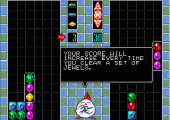
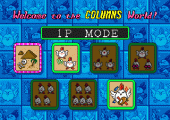
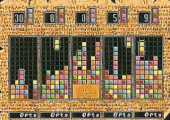
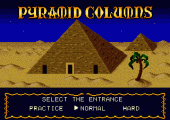
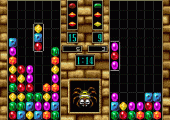
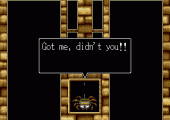
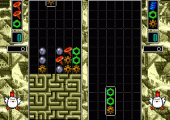
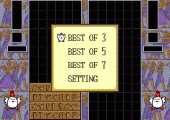
Kinda like King’s Bounty, this is a really accessible entry to a genre I wouldn’t normally play. Sure presentation’s rough around the edges but the music is good, the difficulty curve is about right and the special chain attacks can be real satisfying to pull off.